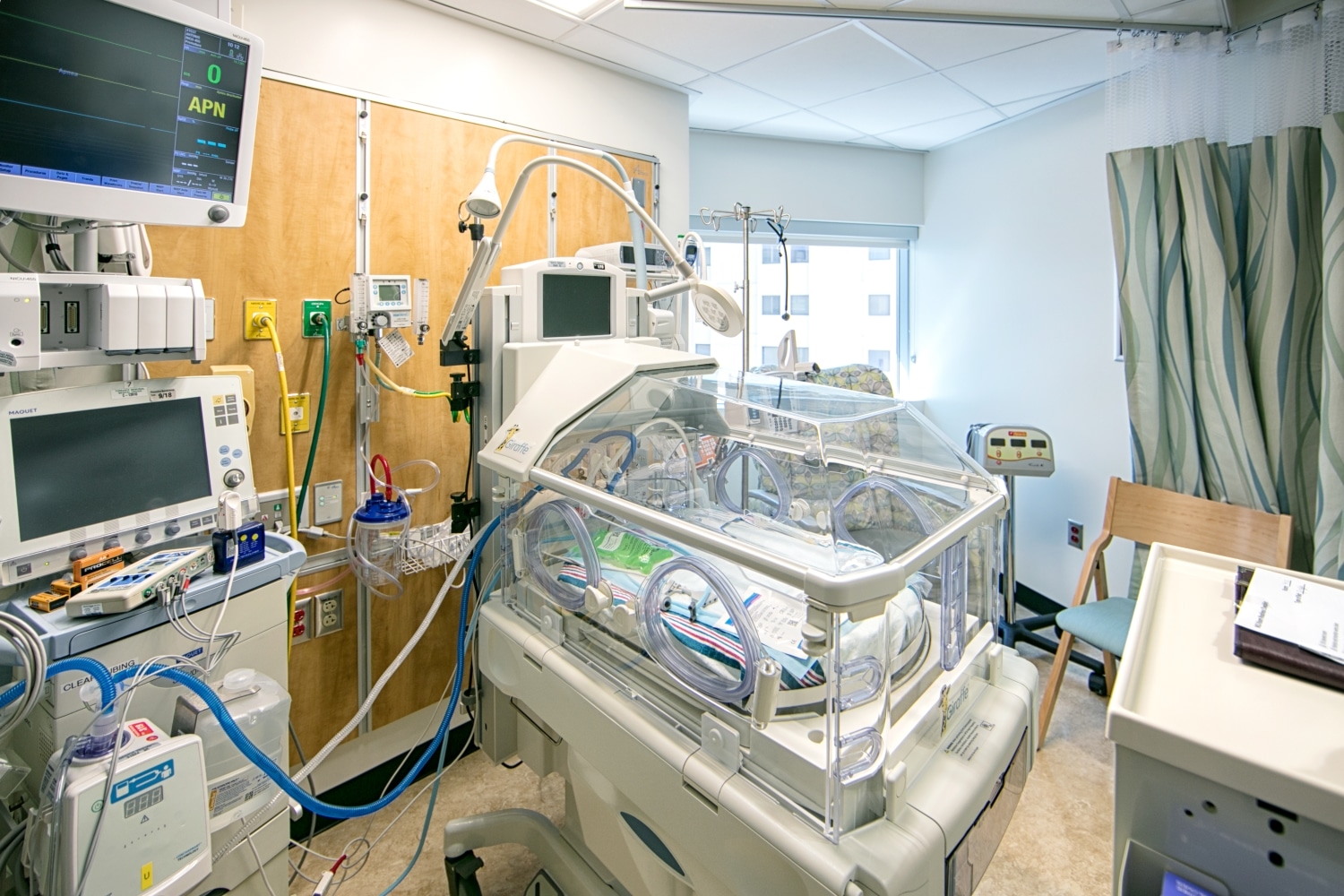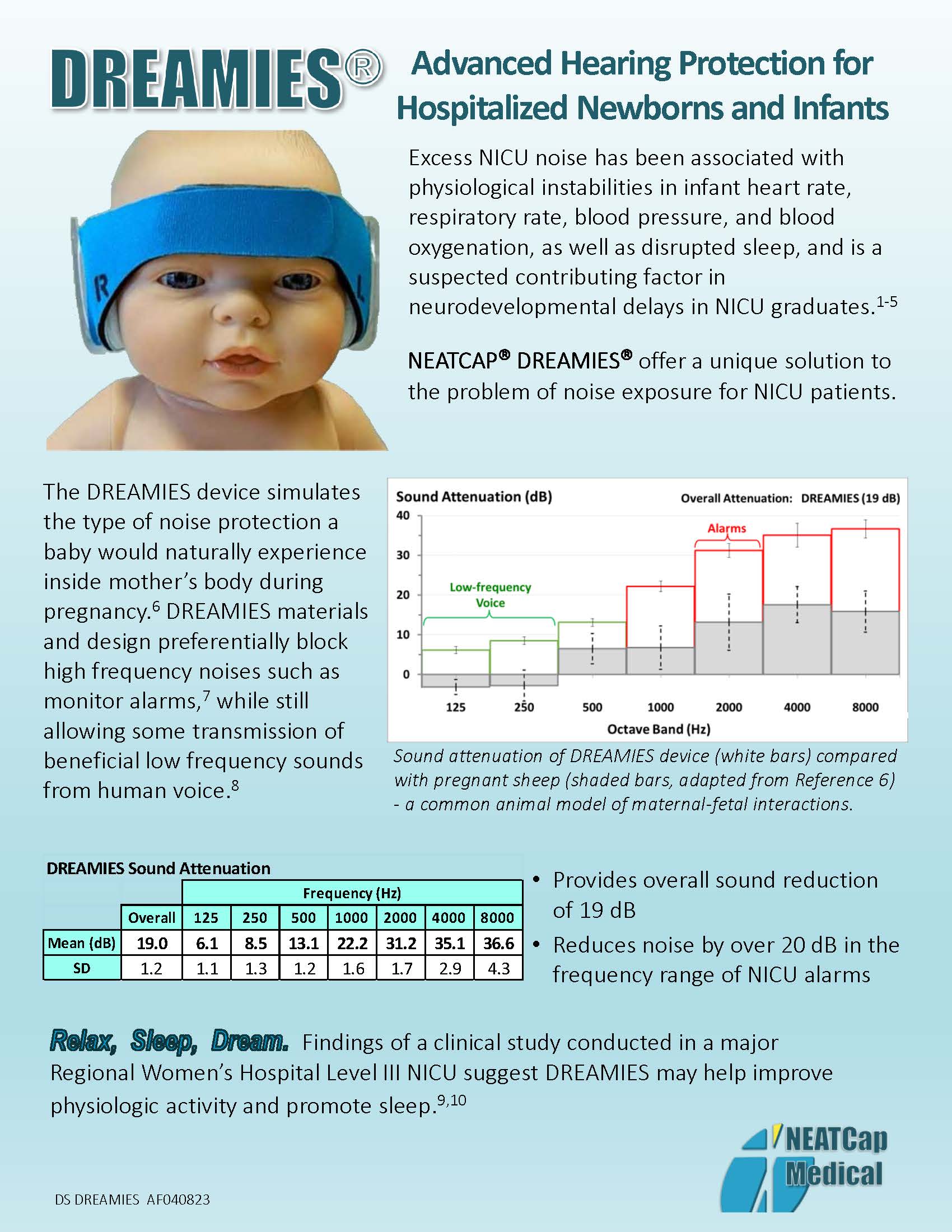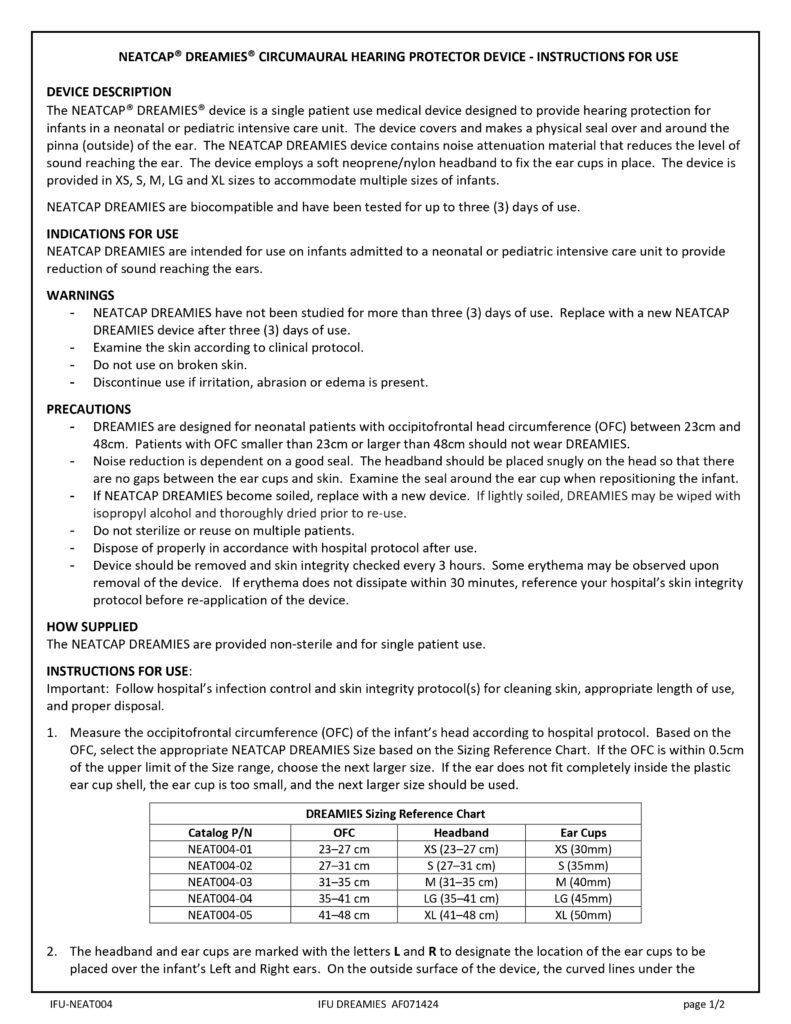DREAMIES in the NICU and PICU.
In 2 independent studies, premature infants and NAS babies were calmer, slept about 15% longer and had increased REM sleep when they wore DREAMIES. REM sleep is critical to neurological development. See Balsan (2021) and Bloch-Salisbury (2022).

Neonatal Noise Exposure
Neonatal Intensive Care Population
According to the World Health Organization, during 2017 in the United States, 517,400 newborns were born prematurely or “preterm” — that is delivered before the 37th week of gestation [N1]. Globally, approximately 15 million babies are born prematurely each year. Most of these newborns will require care in neonatal intensive care units (NICUs).
Due to the opioid crisis in the U.S., in 2016, an additional 31,700 babies were born substance-dependent, often requiring prolonged NICU admissions for the management of Neonatal Abstinence Syndrome (NAS) related to opioid substance withdrawal [N2]. NAS babies are a rapidly increasing proportion of NICU patients in the U.S.
Noise Exposure during NICU Care
NICU babies have significantly higher risks of sensory and neurodevelopmental delays (e.g. hearing loss, speech impediment, delayed cognitive development) when compared to normal full-term infants [N3]. Increasingly, evidence suggests that post-natal exposure to noise, particularly high-frequency sounds, produces stress, and may play a significant role in these problems [N4].
Despite the best efforts of NICU caregivers, NICU’s tend to be intermittently quite noisy — often far exceeding AAP guidelines [N5-6]. Vulnerable and fragile NICU patients are frequently exposed to noxious levels of noise generated by life-sustaining respiratory equipment required to keep these babies alive, and monitor alarms specifically designed to alert NICU caregivers to important changes in patient status.
Excess noise has been associated with physiological instabilities in infant heart rate, respiratory rate, blood pressure, and blood oxygenation, as well as disrupted sleep [N5, N7-10], behaviors that mimic acute pain stress responses [N11-13] and is a suspected contributing factor in neurodevelopmental delays in NICU graduates [N14].
Relax, Sleep, Dream. Clinical Study Results with DREAMIES
DREAMIES sound blocking performance approximates the natural noise protection provided by a mother’s body during pregnancy – preferentially filtering out high frequency noises, and still allowing some transmission of low-frequency human voice.
Findings of a clinical study conducted in a major regional women’s hospital Level III NICU suggest DREAMIES may help improve physiologic activity and promote sleep [E8, E9], which are critical for ensuring healthy neurosensory development in vulnerable NICU neonates [N23-26]. In the study, 25 NICU infants wore DREAMIES in a recurring use fashion – between care and feeding times – during an 8-hour Device-On period followed by an 8-hour Device-Off period for three consecutive days. Periods when infants wore DREAMIES resulted in lower heart and respiratory rates and increased sleep. On average, nurses reported infants had approximately 15% more sleep (quiet and active behavioral sleep states) and less wake with DREAMIES On (86% sleep; 14% wake) as compared with DREAMIES Off (71% sleep; 29% wake). Nurses reported little to no difficulty in applying or removing the device [E8, E9].
To corroborate the observational findings of improved sleep in NICU patients, a follow-up study was conducted in another Level III NICU using full polysomnography (sleep duration and quality) with EEG brain signals recorded (clinical trials.gov report NCT03881553). EEG signals were objectively scored by a blinded, independent sleep rater who was unaware if DREAMIES were On or Off the patient. On average, the duration of sleep increased 14-18%, and active sleep (REM sleep) increased during the time patients wore DREAMIES. These findings suggested that DREAMIES may augment sleep in premature infants by reducing acute episodes of adverse noise exposure in the NICU [E10].




